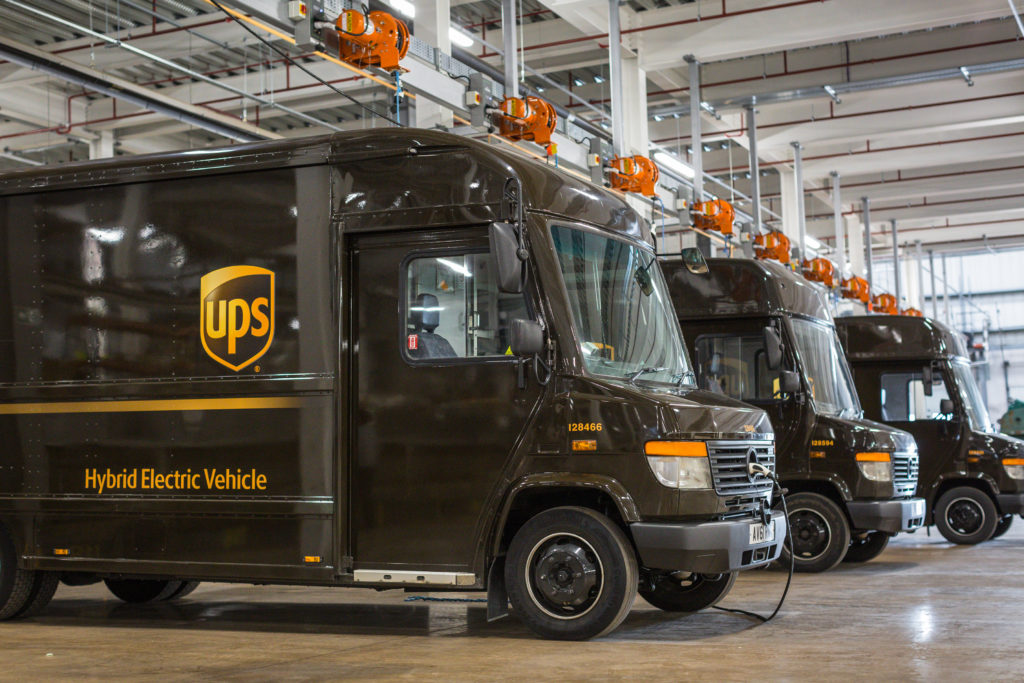UPS has introduced a new line of range-extended electric vehicles (REEVs) to its fleets serving Birmingham and Southampton, UK, to overcome the range limitations of pure electric vehicles within the logistics industry.
The new REEVs operate using groundbreaking hybrid electric vehicle technology, which increases route range while maintaining the cargo capacity of traditional diesel vehicles of the same weight class.
“This is a big breakthrough for our continued use of electric vehicles in the UK – and for the communities we serve,” says Luke Wake, director of automotive engineering and advanced technology, UPS International. “The range jump from 100km to 400km [62 miles to 248 miles] is the result of UPS’s latest collaboration with electric vehicle specialist TEVVA Motors. We can serve our customers with lower emission, alternatively fueled vehicles in places beyond the reach of existing pure electric vehicles at this weight class.
“Since 2009, UPS has invested more than US$1bn in alternative fuel and advanced technology vehicles and fueling stations globally. But news like this really brings home the evolution of our rolling laboratory – you can now actually see progress like this out on the roads in and out of Birmingham and Southampton.”
The REEVs use geofencing technology to automatically switch to pure electric mode when reaching a predetermined boundary, such as prior to entering an urban environment or clean air zone. This same technology allows the vehicle to switch to the onboard range extender that utilizes a significantly smaller and efficient diesel engine to recharge the battery, such as on the motorway connecting neighboring towns and cities, or to make a journey back to the UPS depot.
The vehicles were developed in conjunction with TEVVA and part-funded by the Office for Low Emission Vehicles and Innovate UK. They form part of UPS’s ‘rolling laboratory’ strategy to develop a variety of alternative fuel vehicles, using continuous evaluation and experimentation to ensure that the company reduces its carbon footprint with solutions best suited to each specific environment.
The new vehicles solve a problem faced by many companies operating in cities, including Birmingham and Southampton, where warehouses and depots are often based further from the city center. The current generation of 7.5 metric ton electric delivery vehicles have an average range of 100km (62 miles), which is often not far enough to reach urban drop-off points. Instead, the REEVs can travel an average combined power range of 400km (248 miles), while still ensuring they make zero emissions within the urban areas on their routes.
With a cubic capacity of 23m³ (812ft³), the REEVs also maintain the operational efficiency of high-volume package delivery vehicles. This avoids the need for a greater number of smaller capacity electric vehicles carrying the same number of packages, in turn reducing congestion on the roads.
For more on electrifying delivery fleets, book now for your delegate pass to the Parcel+Post Expo Conference this October. Sandra Roling, head of EV100 at The Climate Group, and Juraj Ulehla, Founder and CEO of Voltia will be speaking about electric propulsion in delivery fleets.


